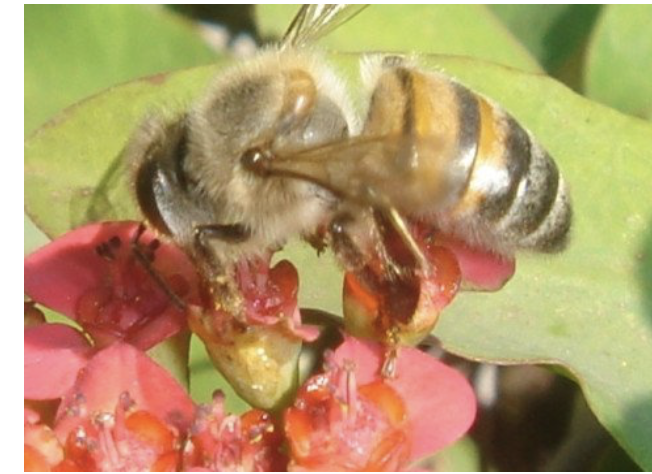Credit:Biovision-Infonet
The bee colony is a fascinating organism of living insects, up to 50-60’000 individual bees. There are 3 different kinds of bees in every colony: a queen, drones (male bees) and workers.

(c) icipe / Biovision
Queen
The queen has a long and slender abdomen, with wings covering about 1/4 of the entire abdomen and 2 large ovaries and the spermatheca (sac-like structure for sperm storage) housed in the abdomen.
Her function is to;
– Mate
– Lay eggs for the rest of her life, in peak times up to 2000 per day in her 1-4 year long life. This is more than the weight of the queen. The larvae hatching from these eggs develop into workers, queens or drones depending on specific conditions.
– To produce chemical substances called pheromones that keep the colony cohesive.

(c) Biovision/icipe
Drones

(c) icipe / Biovision
Drones are the male honeybees and develop from unfertilised eggs. They are larger than workers with large eyes which cover practically the whole head and have a blunt abdomen covered with a tuft of small hairs. Drones fly with a loud buzzing sound and are larger than other bees, and this together make them very scary, however, they lack the sting. They do not collect pollen or nectar, and are unable to produce wax. Drones lack work related structures and their sole function is to fertilise the queens. They are fed by worker bees.
In times when resources are scarce in the bee hive, drones are chased from the hive. They will usually die off as they cannot feed themselves. Drones normally have a life span of 60 days, and they die minutes after mating the queen as they loose “vital parts” of the abdomen in the process.
Workers

(c) icipe / Biovision
Workers are the smallest in size and majority in the colony and develop from fertilized eggs. Here, the feeding of the larvae with royal jelly, a glandular secretion of the workers, is the decisive factor. Fertilised larvae up to three days old can be changed to queens by feeding royal jelly to them. If they are not fed with royal jelly, the larvae will become worker bees. Workers cannot mate or store semen. However in abnormal colony conditions they can lay unfertilised eggs which develop into drones (male bees). Laying workers is a sign that a colony has become queenless for a long period of time.
The worker bees make up about 95% of the colony and they do almost all the work: Older workers bring in nectar, pollen, water, and propolis (bee glue) to the hive. Their hind legs are specially equipped for this task with the so called pollen baskets. The oldest bees guard the hive entrance. Their sting is a powerful weapon. If used against a human the bee usually looses the sting and dies. This will not happen when stinging another bee. Younger bees tend to perform duties inside the hive. Very important is the feeding and cleaning of the queen. Other duties are: cleaning the hive, building wax combs, feeding the young and or controlling the temperature of the brood area. For this duty workers eat honey to produce heat in cold weather. Bringing water inside the hive and fanning with their wings will keep the hive cool in hot weather.